Riders of the Purple Sage (Leisure Historical Fiction) Read online
Zane Grey
This title was previously published by Dorchester Publishing; this version has been reproduced from the Dorchester book archive files.
by Jon Tuska
I grew up in a small town in Wisconsin and for the first ten years of my of life lived in a back apartment half a block from the local public library. You had to be ten years of age before you could borrow books from the adult section of the library. When I turned ten and was able to enter the adult stacks, I chose to withdraw two books: The Bishop Murder Case (Scribner, 1929) by S. S. Van Dine and The Lone Star Ranger (Harper, 1915) by Zane Grey. I recall that I wondered if the story in The Lone Star Ranger was anything like "The Lone Ranger" to which I listened on the radio. It wasn't. In fact, it was something of a disappointment because Jennie Lee, the heroine, was of particular interest to me and halfway through the story she vanished, never to return. Decades passed before I found her again.
It was while trying to put together an accurate filmography for Zane Grey, providing the correct literary source for each of the 109 films based on his work, that I was confronted by the problem of Last of the Duanes. It had been filmed four times, but there was no such novel. I pursued the matter with Loren Grey, the younger son of Zane Grey and president of Zane Grey, Inc. As far as he knew, there had been such a novel, but it had never been published, somehow having been transformed into The Lone Star Ranger upon publication. Is there a manuscript? I asked. Loren wasn't certain, but he promised that he would search. Eventually he did locate his father's handwritten manuscript in the bottom drawer of a file cabinet in the Zane Grey, Inc. room where it had survived for eighty years.
The task, then, was to reconstruct what had happened. In the early years, Zane Grey's novels were serialized in pulp magazines, prior to book publication by Harper & Bros. Grey had written a long serial titled "The Last of the Duanes" and sent it to editor Bob Davis at The Argosy, one of the pulp magazines published by The Frank A.Munsey Company. Davis had previously bought serial rights to a number of Grey's early novels. This time Davis was shocked to find, upon reading this story, that eighteen persons were killed in the course of it. He considered this much too violent to publish. What he agreed to do was to run a drastically abbreviated version that appeared as "The Last of the Duanes" in a single installment in The Argosy (9/14).
When it came time to offer the book to Harper & Bros., Grey had lost faith in the original story as he had written it. The book that emerged as The Lone Star Ranger, therefore, is for about the first 200 pages the manuscript of "The Last of the Duanes" and is called "Book I: The Outlaw". The remainder of the novel, called "Book II: The Ranger", is actually the second half of the serial "The Lone Star Rangers" from All-Story Cavalier Weekly (5/9/14-5/23/14). Apparently Ripley Hitchcock, Grey's editor at Harper & Bros., rewrote the second half of the "The Lone Star Rangers", changing it from a first-person narrative into a continuation and conclusion of the hybrid novel titled by him The Lone Star Ranger. Since neither story had appeared in anything resembling what Zane Grey had written, it was finally possible almost ninety years later to publish each for the first time in book form as the author had intended: Last of the Dunes (Leisure Books, 1998) and Rangers of the Lone Star (Leisure Books, 1999).
I urged Loren Grey to tell me of any other manuscripts by his father that had met a similar fate. There were, he said, the sections in what became 30,000 on the Hoof (Harper, 1940) that dealt with Lucinda Huett's rape by a renegade Apache and the decision made by Logan and Lucinda Huett to keep the child and raise him as if he were their own. It is this half-Apache son who alone of the Huetts' sons survives the Great War, returns to the ranch, and proves able to save it. The story was finally published in its entirety as Woman of the Frontier (Leisure Books, 2000). Finally, Loren said, he had the complete typescript of his father's major novel set in the back country of Australia that had been cut to a third of its length, ostensibly because of the paper shortage, when it was published as Wilderness Trek (Harper, 1944). It was restored to its full length as The Great Trek (Five Star Westerns, 1999).
If this sort of thing had happened so often, what, then, of those novels rightly regarded as classics: Riders of the Purple Sage (Harper, 1912) and its sequel, The Rainbow Trail (Harper, 1915)? Zane Grey, Inc. did not have the original holographic manuscripts of these. They had been variously donated by Lina Elise Grey, Zane Grey's widow, to various archives. The holographic manuscript for The Rainbow Trail was located in the Special Collections of the Brigham Young Univer sity Library. Upon examination, it was found to be significantly different than the published book, especially with regard to the fate of young Fay Larkin, who was forced into a marriage with a Mormon who already had five wives and fifty-five children and who in time gave birth to a son. The Harper & Bros. edition would have the reader believe that Fay Larkin remained a virgin while being held captive for two years in a Mormon town for sealed wives! Critics of Zane Grey, in fact, have singled out this incident as a primary indication that Grey was a hopelessly romantic writer incapable of historical realism. Now to refute them The Desert Crucible (Leisure Books, 2004) has finally been published as the author wrote it.
The changes and alterations in Riders of the Purple Sage, based on the original holographic manuscript in the collection of the Ohio State Historical Society, are even more drastic and alter the entire perspective of the story. When I had finished copy-editing the original version of what remains Zane Grey's masterpiece, I wrote to Loren Grey:
Enclosed are the unproofed galley pages of Riders of the Purple Sage: The Restored Edition. It answers a number of questions that the characters and situations posed after publication of the bowdlerized version by Harper & Bros. I followed along with the original text as I was copy-editing, and I was astonished at just how much Ripley Hitchcock rewrote what your father had written. These changes haven't always to do with your father's story, but with matters of authorial voice, and often (if you compare the two versions) the changes in tone, diction, and style tend to be somewhat jarring. In every case, I prefer the way Zane Grey put it. You asked about Fay Larkin. That question isn't really answered in the omniscient third person. Jane believes Fay is her half sister. The blonde hair would seem to support this. But as Jane also points out, Mrs. Larkin would not tell her the truth even on her deathbed. Fay is turned over to the rustlers, just as young Bess was. I think this implies a certain power struggle in Cottonwoods, since Withersteen's progeny with Gentile women are abandoned to rustlers rather than being forcibly brought up Mormons. Jane is scarcely a traditional heroine, since she has had a sexual relationship with Bern Venters, seduces Lassiter, and then flies into a jealous rage at Venters when she discovers that Venters has been living in Surprise Valley with Bess. The only reason Jane finally abandons all hope of flight by providing Venters and Bess with Night and Black Star to escape is because Bess is also her half sister, a relationship she can never publicly acknowledge. There is a lot of deception in that final meeting and departure, since Venters also lies about Wrangle's race. Jane tells Lassiter that she loves him at the end, but I am unsure if she is to be entirely believed. In The Desert Crucible, Jane and Lassiter visit with Bern and Bess in Illinois, but there is no hint that Jane is going to be more truthful about Bess's heritage-and ultimately it would do Bess little good. Jane is constantly forced into brutal moral dilemmas by the Mormons, above all when she has to choose between Lassiter's life and Fay's marriage to a Mormon. Perhaps this might be a final answer to the question of how much she loves Lassiter. This book is scheduled for publication in January, 2005. It is the finest Western story I have ever read....
It turned out to be the same story at Street & Smith's The Popular Magazine when Grey offered Riders of the Purple Sage there. It would simply be too offensive to the religious and moral sensibilities of readers. Frustrated by this round of rejections, Grey made a special plea to Frederick Duneka, who had been Mark Twain's editor at Harper & Bros. and was now vice president and executive officer at the firm. Grey paid a personal visit to Duneka and was pleased to learn that not only had Duneka read the manuscript but so had his wife, and that they both loved it. Harper & Bros. would publish the novel. However, it would not be published exactly as Zane Grey had written it. Ripley Hitchcock as senior editor was charged with executing the necessary editorial changes that would make the novel more acceptable generally to readers and book buyers. Harper & Bros. also bought serial rights, so it was Hitchcock's heavily edited version of Riders of the Purple Sage that appeared in nineteen installments in the monthly magazine, Field r Stream (1/12-7/13).
Yet, were a reader to believe that censorship in American letters is now something in the distant past, I would disagree. This kind of editorial intervention has only changed its political and moral guise over time; otherwise, it is as powerful and pervasive as ever. When Jane Candia Coleman submitted I, Pearl Hart to a major New York publisher in 1997, she was told the novel could not be published as she had written it. Although her story was based on the real Pearl Hart, a woman who committed a daring stagecoach robbery and was sent to Yuma Territorial Prison as a result, the editor wanted several prison scenes added graphically detailing Pearl's sexual activities with various female inmates. Since nothing of the kind happened to Pearl Hart, the author refused to change history to satisfy any editor. I, Pearl Hart (Leisure Books, 2000) was eventually published exactly the way the author intended, true to the character, to her time, and to the land. I believe authors of literary fiction deserve the freedom to tell a story according to their own standard of artistic truth, to listen unhindered to their muse, and to share with us what they have learned. Now for the first time in paperback, ninety-three years after he completed it, Riders of the Purple Sage is published exactly as Zane Grey wrote it.
A sharp clip-clop of iron-shod hoofs deadened and died away, and clouds of yellow dust drifted from under the cottonwoods out over the sage.
Jane Withersteen gazed down the wide purple slope with dreamy and troubled eyes. A rider had just left her and it was his message that held her thoughtful and almost sad, awaiting the churchmen who were coming to resent and attack her right to befriend a Gentile. She wondered if the unrest and strife that had lately come to the little village of Cottonwoods was to involve her. Then she sighed, remembering that her father had founded this remotest border settlement of southern Utah, and that he had left it to her. She owned all the ground and many of the cottages. Withersteen House was here, and the great ranch with its thousands of cattle, and the swiftest horses of the sage. To her belonged Amber Spring, the water that gave verdure and beauty to the village and made living possible on that wild purple upland waste. She could not escape being involved by whatever befell Cottonwoods.
That year, 1871, had marked a change that had been gradually coming in the lives of the peace-loving Mormons of the border. Glaze, Stone Bridge, Sterlingvillages to the north-had risen against the invasion of Gentile settlers and the forays of rustlers. There had been opposition to the one and fighting with the other, and now Cottonwoods had begun to wake and better itself and grow hard.
Jane prayed that the tranquility and sweetness of her life would not be permanently disrupted. She meant to do so much more for her people than she had done. She wanted the sleepy, quiet, pastoral days to last always. Trouble between the Mormons and Gentiles of the community would make her unhappy. She was Mormon-born, and she was a friend to poor and unfortunate Gentiles. She wished only to go on doing good and being happy. And she thought of what that great ranch meant to her. She loved it all-the grove of cottonwoods, the old stone house, the amber-tinted water, and the droves of shaggy, dusty horses and mustangs, the sleek, clean-limbed, blooded racers, and the browsing herds of cattle, and the lean sun-bronzed riders of the sage.
While she waited there, she forgot the prospect of untoward change. The bray of a lazy horse broke the afternoon quiet, and it was comfortingly suggestive of the drowsy farmyard, and the open corrals, and the green alfalfa fields. Her clear sight intensified the purple sage slope as it rolled before her. Low swells of prairie-like ground sloped up to the west. Dark, lonely cedar trees, few and far between, stood out strikingly, and at long distances ruins of red rocks. Farther on, up the gradual slope, rose a broken wall, a huge monument, looming dark purple and stretching its solitary mystic way, a wavering line that faded in the north. Here to the westward was the light and color and beauty. Northward the slope descended to a dim line of canons from which rose an upflinging of the earth, not mountains, but a vast heave of purple uplands, with ribbed and fan-shaped walls, castle-crowned cliffs, and gray escarpments. Over it all crept the lengthening, waning afternoon shadows.
The rapid beat of hoofs recalled Jane Withersteen to the question at hand. A group of riders cantered up the lane, dismounted, and threw their bridles. They were seven in number, and Tull, the leader, a tall dark man, was an elder of Jane's church.
"Did you get my message?" he asked curtly.
"Yes," replied Jane.
"I sent word I'd give that rider Venters half an hour to come down to the village. He didn't come."
"He knows nothing of it," said Jane. "I didn't tell him. I've been waiting here for you."
"Where is Venters?"
"I left him in the courtyard."
"Here, Jerry," called Tull, turning to his men, "take the gang and fetch Venters out here if you have to rope him."
The dirty-booted and long-spurred riders clanked noisily into the grove of cottonwoods and disappeared in the shade.
"Elder Tull, what do you mean by this?" demanded Jane. "If you must arrest Venters, you might have the courtesy to wait till he leaves my home. And if you do arrest him, it'll be adding insult to injury. It's absurd to accuse Venters of being mixed up in that shooting fray in the village last night. He was with me at the time. Besides, he let me take charge of his guns. You're only using this as a pretext. What do you mean to do to Venters?"
"I'll tell you presently," replied Tull. "But first you tell me why you champion this worthless rider."
"Worthless!" exclaimed Jane indignantly. "He's noth ing of the kind. He was the best rider I ever had. There's not a reason why I shouldn't champion him and every reason why I should. It's no little shame to me, Elder Tull, that through my friendship he has roused the enmity of my people and become an outcast. Besides, I owe him eternal gratitude for saving the life of little Fay."
"I've heard of your love for Fay Larkin and that you intended to adopt her. But... Jane Withersteen, the child is a Gentile!"
"Yes. But, Elder, I don't love the Mormon children any less because I love a Gentile child. I shall adopt Fay if her mother will give her to me."
"I'm not so much against that. You can give the child Mormon teaching," said Tull. "But I'm sick of seeing this fellow Venters hang around you. I'm going to put a stop to it. You've so much love to throw away on these beggars of Gentiles that I've an idea you might love Venters."
Tull spoke with the arrogance of a Mormon whose power could not be brooked and with the passion of a man in whom jealousy had kindled a consuming fire.
"Maybe I do love him," said Jane. She felt both fear and anger stir her heart. "I'd never thought of that. Poor fellow! He certainly needs someone to love him."
"This'll be a bad day for Venters unless you deny that," returned Tull grimly.

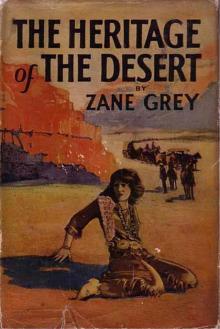 The Heritage of the Desert: A Novel
The Heritage of the Desert: A Novel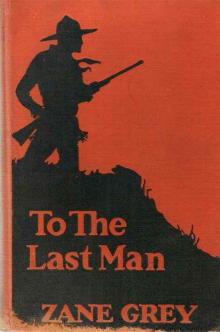 To the Last Man
To the Last Man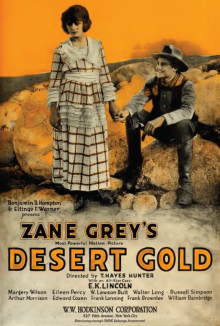 Desert Gold
Desert Gold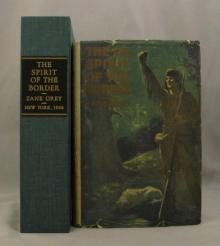 The Spirit of the Border: A Romance of the Early Settlers in the Ohio Valley
The Spirit of the Border: A Romance of the Early Settlers in the Ohio Valley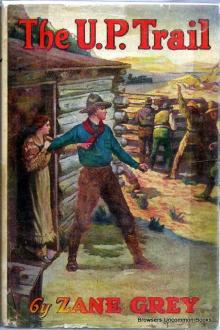 The U. P. Trail
The U. P. Trail The Rustlers of Pecos County
The Rustlers of Pecos County The Border Legion
The Border Legion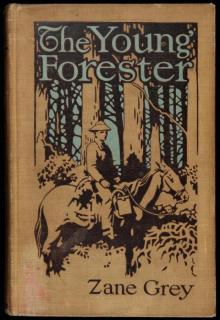 The Young Forester
The Young Forester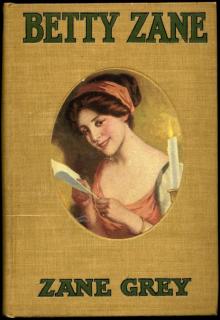 Betty Zane
Betty Zane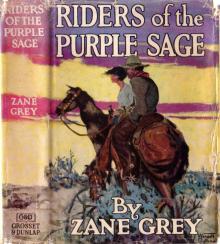 Riders of the Purple Sage
Riders of the Purple Sage The Second Zane Grey MEGAPACK®
The Second Zane Grey MEGAPACK® The Rainbow Trail
The Rainbow Trail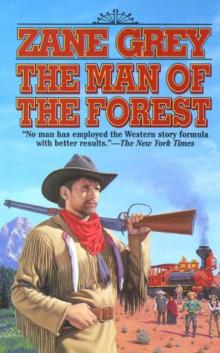 The Man of the Forest
The Man of the Forest The Mysterious Rider
The Mysterious Rider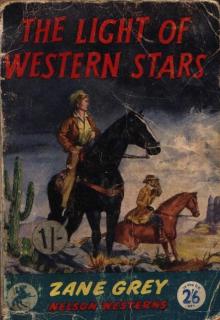 The Light of the Western Stars
The Light of the Western Stars The Last of the Plainsmen
The Last of the Plainsmen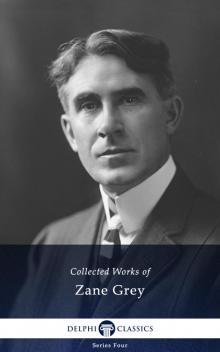 Collected Works of Zane Grey
Collected Works of Zane Grey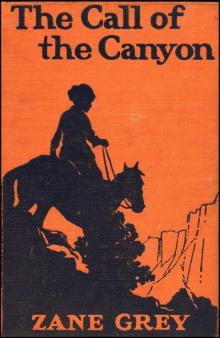 The Call of the Canyon
The Call of the Canyon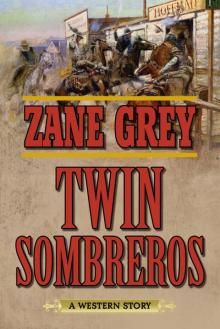 Twin Sombreros
Twin Sombreros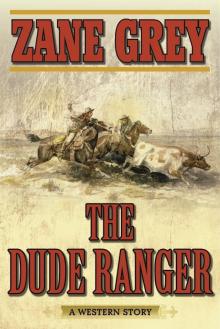 The Dude Ranger
The Dude Ranger The Water Hole
The Water Hole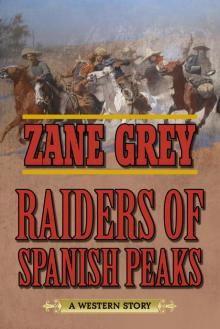 Raiders of Spanish Peaks
Raiders of Spanish Peaks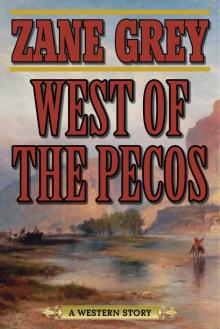 West of the Pecos
West of the Pecos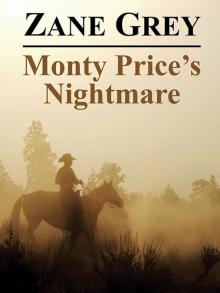 Monty Price's Nightmare
Monty Price's Nightmare Stairs of Sand
Stairs of Sand Rogue River Feud
Rogue River Feud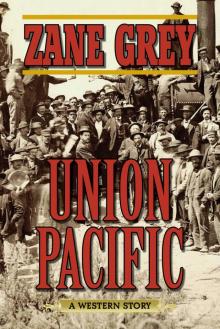 Union Pacific
Union Pacific The Western Romance MEGAPACK ®: 20 Classic Tales
The Western Romance MEGAPACK ®: 20 Classic Tales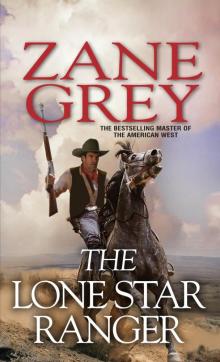 The Lone Star Ranger
The Lone Star Ranger The Zane Grey Megapack
The Zane Grey Megapack Shadow on the Trail
Shadow on the Trail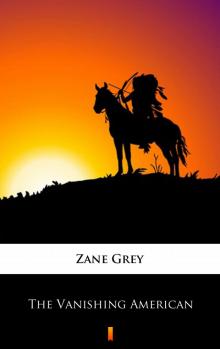 The Vanishing American
The Vanishing American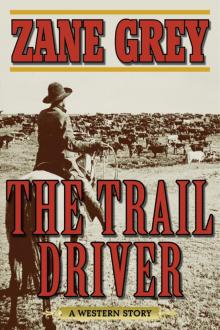 The Trail Driver
The Trail Driver War Comes to the Big Bend
War Comes to the Big Bend The Westerners
The Westerners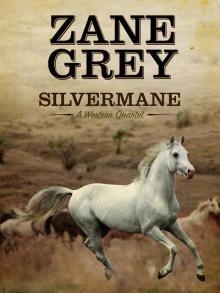 Silvermane
Silvermane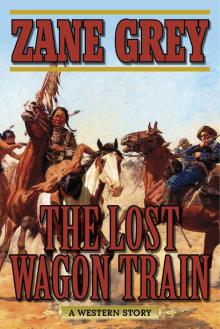 The Lost Wagon Train
The Lost Wagon Train Desert Gold and the Light of Western Stars
Desert Gold and the Light of Western Stars Wildfire and the Heritage of the Desert
Wildfire and the Heritage of the Desert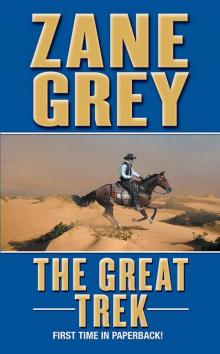 The Great Trek
The Great Trek Cabin Gulch
Cabin Gulch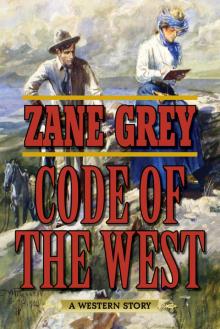 Code of the West
Code of the West Sunset Pass
Sunset Pass Panguitch
Panguitch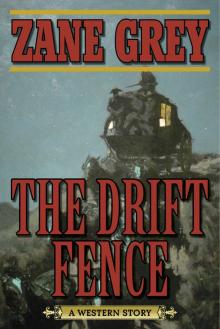 The Drift Fence
The Drift Fence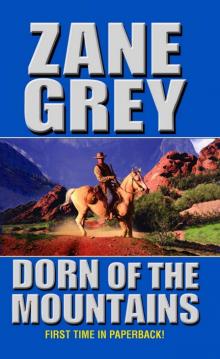 Dorn Of The Mountains
Dorn Of The Mountains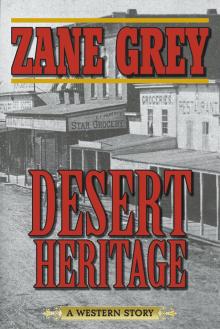 Desert Heritage
Desert Heritage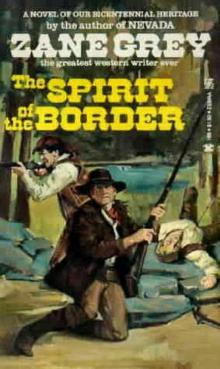 The Spirit Of The Border
The Spirit Of The Border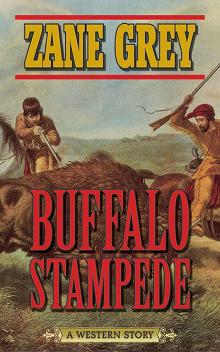 Buffalo Stampede
Buffalo Stampede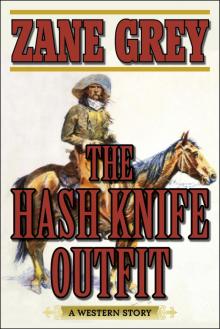 The Hash Knife Outfit
The Hash Knife Outfit The Lone Star Ranger and the Mysterious Rider
The Lone Star Ranger and the Mysterious Rider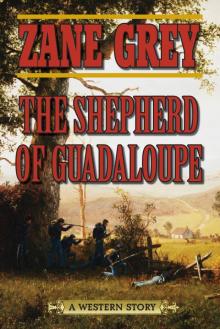 The Shepherd of Guadaloupe
The Shepherd of Guadaloupe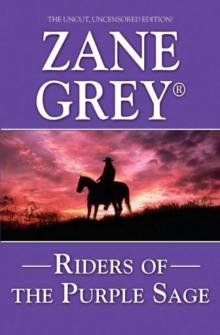 Riders of the Purple Sage (Leisure Historical Fiction)
Riders of the Purple Sage (Leisure Historical Fiction)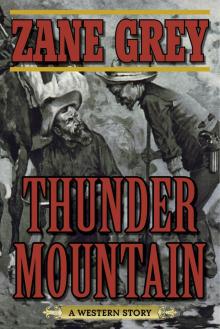 Thunder Mountain
Thunder Mountain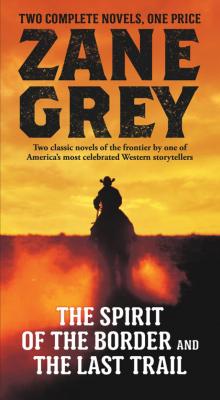 The Spirit of the Border and the Last Trail
The Spirit of the Border and the Last Trail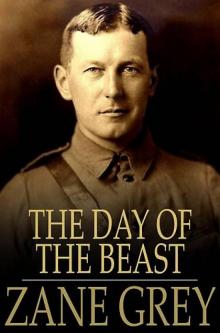 The Day of the Beast
The Day of the Beast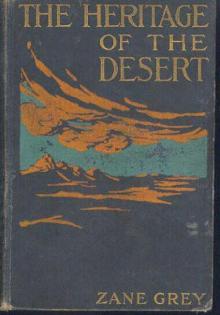 The Heritage of the Desert
The Heritage of the Desert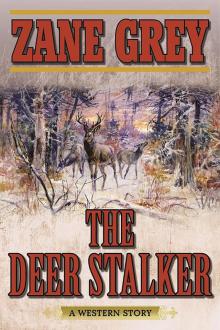 The Deer Stalker
The Deer Stalker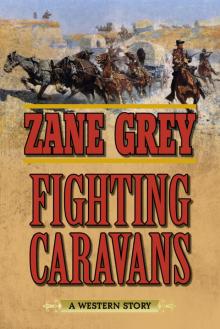 Fighting Caravans
Fighting Caravans